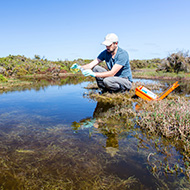Cat believed dead found after 11 years
Toby is now back at home with Justine and Eric Allan.
A family in Nuneaton, Warwickshire has been reunited with their pet cat 11 years after they presumed he had died.
Toby had gone missing not long after Justine and Eric Allan moved home in December 2012. Living near a busy road, the family had feared the worse.
Now, owing to his microchip, he is finally back home.
A member of the public in nearby Bedworth contacted Cats Protection after she noticed that a cat she had occasionally fed, but hadn’t seen for a long time, was hanging around the bin stores of her building.
Thinking that the cat was a female which had gained weight, she phoned Cats Protection in case it was a pregnant stray which needed help.
Wendy Harris, coordinator for Cats Protection’s Coventry Branch, said: “A lady rang us late on Saturday evening when the cat appeared and our volunteer Lorraine went out at 9pm to scan the cat and it turned out not only did it have a chip but that he was a neutered male named Toby, rather than female as originally believed.”
The charity got in touch with the owners, who soon came to collect him.
Toby is now settling back into life at home, where he is getting to know Bernie, the family’s one-year-old King Charlies cavalier.
Mrs Allan said: “He doesn’t seem different at all, he’s obviously been cared for and fed by somebody, I just wish he could tell us what happened.
“I never thought in a million years I’d see him again. Think of all those things that have happened in that time. I’m so grateful to the lady who took him in and to Cats Protection for coming out on Saturday night especially as he wasn’t easy to catch!”
Madison Rogers, Cats Protection’s head of advocacy, campaigns and government relations, said: “It is always wonderful to hear stories like Toby’s where a cat and owner have been reunited thanks to their microchip after so many years apart.
“We cannot know what happened to Toby before he was scanned but we encourage anybody who finds a cat who they believe to be lost or stray to take them to a vet or contact an animal rescue charity where they can be checked for a microchip.”
Image © J Allan



 A set of international guidelines for disease surveillance in wildlife has been updated for the first time since 2015.
A set of international guidelines for disease surveillance in wildlife has been updated for the first time since 2015.